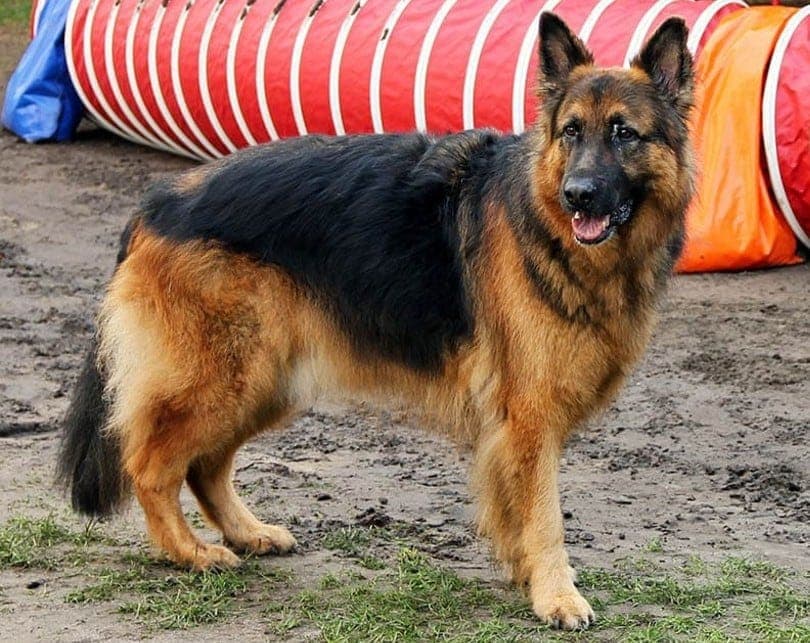How to Train a Samoyed: 12 Expert Tips & Advice

Updated on
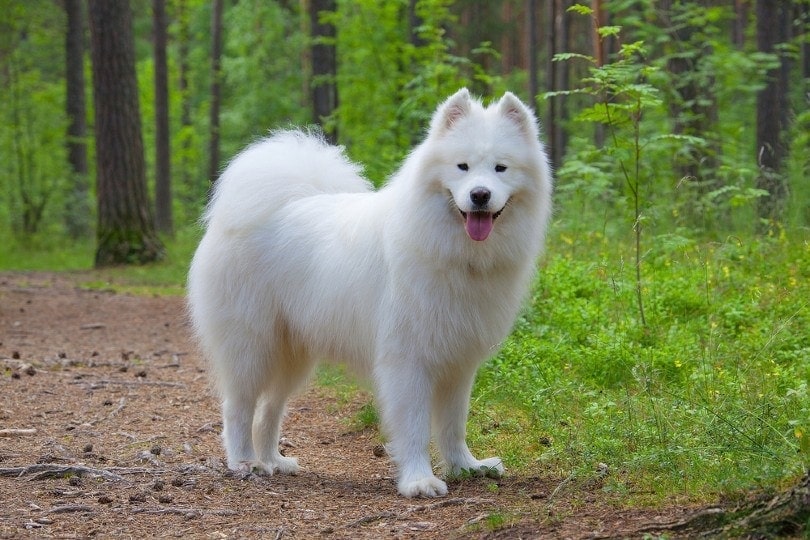
When you bring a new dog into your family, proper socialization and training are essential for raising a well-mannered and well-rounded pet. Basic training is essential for all dogs and is the cornerstone for more advanced training for working breeds like Samoyeds.
If you are bringing home a Samoyed, training tips can go a long way, especially since they can be stubborn. In this article, we’ll discuss 12 expert tips to help make training your Samoyed much easier.
The 12 Tips for Training a Samoyed
1. Create a Consistent Training Schedule
Creating a training schedule will help you stay committed and help your Samoyed learn quickly and adjust. It creates a routine that your Samoyed will anticipate and keeps your training consistent, which is vital for training.
Consistency is very important, so you need to ensure that your whole family is on board and uses the same cues and commands. Otherwise, your Samoyed will easily become confused, and this will set back your training.

2. Train Your Samoyed to be Calm
Samoyed puppies can be hard to control when they become very excited, especially with a breed known to show stubbornness. This excitement, if not managed, will make training much harder, but a calm and focused dog is much easier to train. An over-excited dog can also cause frustration for an owner who is likelier to lose patience. To help prevent this, train them to remain in one area of the room or restrict their access to a single room. Teaching them basic commands such as “sit” and “stay” will also make training a lot easier.
3. Be a Calm and Confident Owner and Trainer
Our dogs feed off our energy, so if you are excited and energetic, your dog will likely be too, and if you are calm and focused, your dog will more likely follow your cue. By being calm, you are teaching your dog to be calm, and by being confident, you are showing your dog that you are the leader or the “alpha.” Your Samoyed will more likely trust, listen and obey when they know you are in control.
4. Get to Know Your Samoyed’s Body Language
Learn about your dog’s body language. Your dog may be unable to talk, but they can communicate how they feel through body language using their eyes, tail, stance, and vocalizations. By learning their body language, you can determine when your dog is tired, not feeling well, irritated, excited, or uninterested. This is an integral part of training because if your dog is uninterested or tired, your training will go to waste.
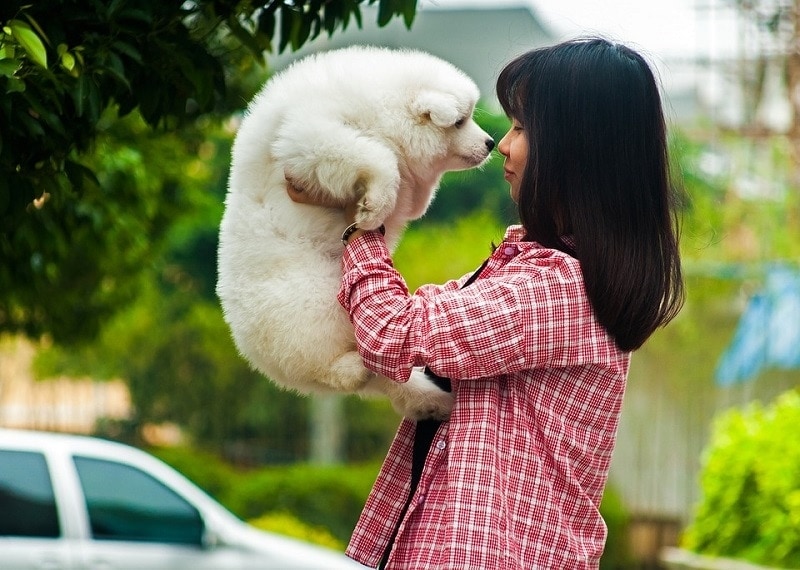
5. Use a Different Tone of Voice for Commands
Dogs respond to our tone and body language because they don’t understand words, so your commands should be said with a different tone of voice than your praise, so they learn that specific cue and respond quickly to it. The command words should be short and clear, and your tone should not be too stern.
6. Train with High-Value Treats
Using positive reinforcement is the best method for training. It involves using treats and praise to reward wanted behavior so that your dog makes a positive association. You should train your Samoyed with high-value treats, which is a treat that your dog loves the most and you know they will work hard for. This is especially helpful for a dog that tends to be more stubborn, like the Samoyed.
7. Minimize Distractions
Always limit distractions when you start a training session with your Samoyed. You can use a quiet room that is away from distractions, such as other dogs, kids, or outside sounds and sights. Your Samoyed will be more focused and attentive if there is nothing to steal their attention, which will also help you maintain your patience.
Ensure no food is cooking and your dog’s toys are stored away. You should also ensure that your Samoyed has been to the toilet and has eaten before you start.
8. Keep Sessions Short
Shortening your training sessions can help prevent your Samoyed from becoming overwhelmed and losing interest. They don’t have a long attention span, especially when they are still a young puppy. You can have a few short sessions daily, but 15 minutes for each session is long enough.

9. Train in Different Environments
It’s nice when your dog listens and obeys at home, but that behavior must be followed when going on walks, visiting parks and public places, and in new environments. Once your Samoyed has mastered a new command at home, that shouldn’t be the end of the training. You should then practice the command on walks, at the park, and in other busy areas to instill it and teach your dog to obey no matter the environment or what is happening around them. This is particularly helpful for people who want to travel with their Samoyeds or have their dogs entered in competitions.
10. Be Patient
Patience is one of the most essential qualities to master when training your dog. You need to understand that your Samoyed is not perfect, and mistakes will be made. Some days will go better than others, but it’s important for you to remain consistent and patient, and patience is vital for consistency.
If you allow yourself to become frustrated, you may lash out or give up, which can set you back in your training. No one is perfect, and frustration is normal, but you must ensure you can manage it. If you are not feeling in the best of moods, wait until you feel better to begin your training session, or work on something your dog already knows instead of trying something new.
11. Have Fun and Be Positive
Training your dog should always be fun. It needs to be a positive experience for your dog and a bonding experience for both of you. If you start becoming frustrated, your dog will pick up on it.
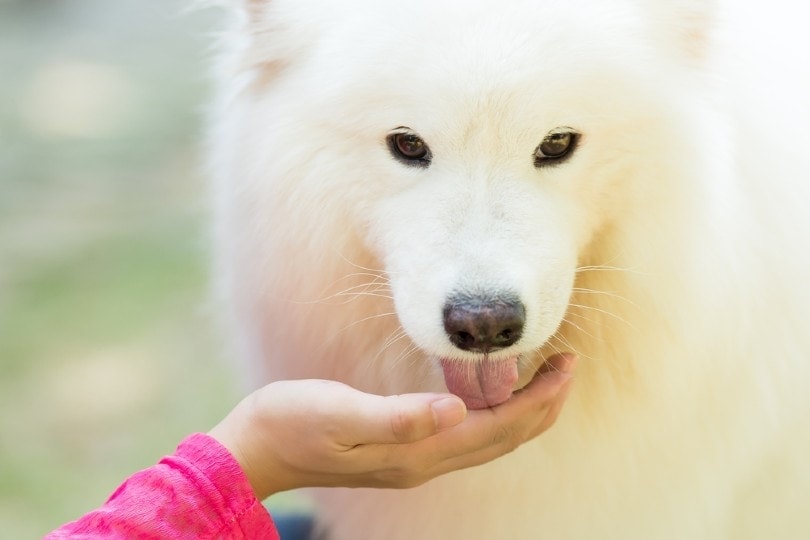
12. Always End on a Positive Note
Ending the training session with something your dog knows well will help end the session on a positive note. This will keep your Samoyed motivated and help build a positive association with training. If your Samoyed has mastered the art of fetching, throw a stick for your dog to retrieve and return as your last trick for the session. And don’t forget to provide praise and your Samoyeds favorite treat!
When to Train You Samoyed
Like other dogs, it is ideal to start training your Samoyed when they are young and before any characteristics have developed. The optimum period is between 7 and 8 weeks of age because they are mature enough to understand cues and commands.
Delaying training until 6 months or older will make it more challenging to train them as Samoyeds develop their behaviors from their environment or experiences. The earlier you start training, the easier it will be for you and your Samoyed.
Are Samoyed Dogs Easy to Train?
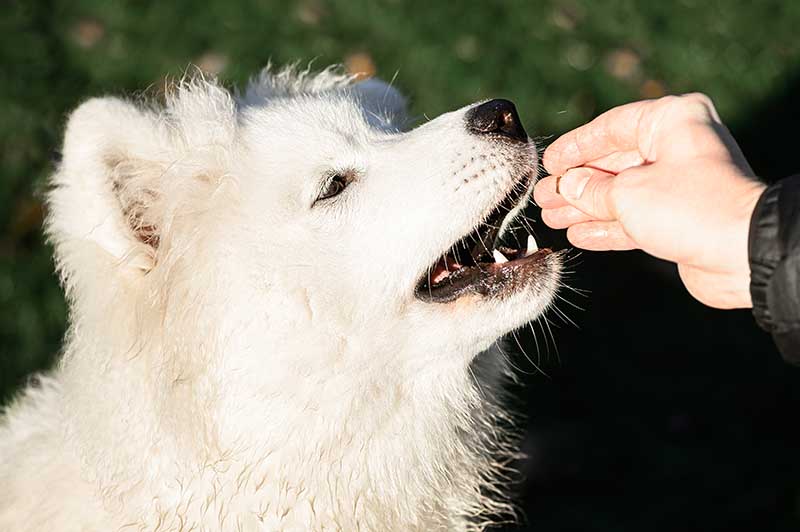
A lot of people are under the impression that Samoyed dogs are harder to train than other breeds. While there is some truth to that, there are also other factors that come into play that can determine how easy or hard a dog is to train. Their ease of training will depend on what the owner’s goals are for training and their willingness to follow through.
Samoyeds are generally free-spirited, intelligent dogs that can get bored easily. Training them to hunt or herd may be simpler than obedience training, as they were originally bred to hunt. They, therefore, have a strong prey drive and may present a hint of stubbornness and independence, which, combined with high intelligence, may make them challenging for some owners to train.
Training a Samoyed doesn’t need to be intimidating or challenging, for that matter. While they may have some stubborn traits, with correct early training, patience, and commitment, you can have a trained and well-rounded Samoyed sooner than you think. Samoyeds needs a firm trainer that is not too harsh and a trainer that is always in control of the situation and takes the role of the leader.
Conclusion
Samoyeds can sometimes be a little stubborn, but with the proper training and patience, they can be easily trained in no time. Starting young is best, with positive reinforcement, patience, and consistency from a confident owner. Training should always be kept short, fun, and positive and should be continued throughout your dog’s life. If you have issues training your Samoyed, you can hire a professional trainer to help.
Featured Image Credit: Nik Tsvetkov, Shutterstock





